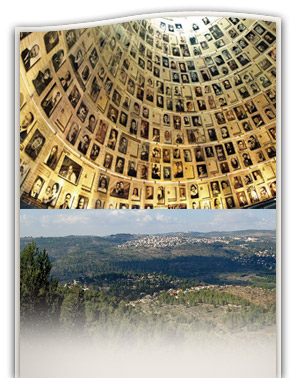
Answers and hope are sometimes found in the strangest places. This past December (2010) I was one of 14 journalists, including ASSIST News Service (ANS) founder Dan Wooding, who had the privilege of visiting Israel as guests of the Israeli government. After several deeply spiritual days of eagerly visiting Joppa, Caesarea, Megiddo, Cana, Nazareth, Capernaum, and sites around Jerusalem, our guide led us to a memorial that filled me with a sense of dread—Yad Vashem, the holocaust museum.
Movies and previous visits to holocaust memorials always stoked smoldering anger and lingering pain in my heart over such inhumanities. I did not want to lose the inspiration I gained from walking in the steps of Jesus while trudging back through ghastly reminders of the racial hatred that scars our pasts and our persons.
I expressed my reluctance and reasons to our guide, Tsion Ben-David, who empathized but encouraged me to try it. Then, “if it is too painful, turn around and come out.”

The Hall of Names at Yad Vashem's holocaust history museum (top) and the view at the exit of the museum.
With deep apprehension I entered the winding corridor that slowly descended into the heart of the memorial. Each step passed walls that retraced the roots and rise of anti-Semitic hatred, a supremacist mind-set, open hostility, neutrality, and the indifference that paved the way for the holocaust. One poignant note by a German pastor read, “They came for the Communists, and I did not object, for I was not Communist. They came for the socialists . . . the Jews . . . and I did not object. . . . When they came for me, there was no one left to object” (Martin Niemöller).
The exhibits then chronicled the terror, humiliation, forced labor, deportations, death camps, and exterminations of the holocaust, and ended at a huge pile of shoes once worn by those killed in the ovens.
From that low point, the winding corridor began a slow ascent through exhibits that revealed something I had never seen in any other holocaust museum or memorial. These walls, letters, and photos now portrayed how Jews as individuals, families, and a nation have risen from the ashes of Auschwitz to rebirth and renewal, from being victims to victors.
Two things surfaced for me in Yad Vashem: first, a conviction that no one can afford to be neutral or indifferent to injustice. We are our brother’s keeper. Second, I began to sense hope and see anew the possibility for a creative response to injustice.
Smoldering anger over the past does not have to burn away the love we need for today. Those of us who have suffered at the hand of hatred and indifference to our plight can move beyond pain to forgiveness and full engagement in love and life again. How? I saw the answer in Yad Vashem. It is possible as we personally learn from the past, educate the world about the past and the possibilities of the present, choose to love all humankind, give of ourselves even in the face of risk, commemorate how God has led us, and connect and hold a firm faith in a promised future. As Christians we find this in Jesus. Then, like Joseph, we can be “fruitful in the land of . . . affliction” (Gen. 41:52, NKJV).*
When I walked out of the museum, the ceiling swung up and outward to a magnificent view of the Judean valley. At first the sky over the valley was covered by clouds, but then the sun’s rays broke through and shone a light over the valley. Pointing to the valley, Tsion Ben-David exclaimed, “See this valley? See the emerging cities? This is our revenge.”
The best victory over pain is rebirth, renewal, and a life committed to love.
________
This story was first printed in Southern Tidings. Used by permission.
* Texts credited to NKJV are from the New King James Version. Copyright © 1979, 1980, 1982 by Thomas Nelson, Inc. Used by permission. All rights reserved.
___________
R. Steven Norman III is director/editor of Southern Tidings, the publication of the Southern Union Conference of Seventh-day Adventists, as well as the Southern Union Communication director. This article was published October 13, 2011.